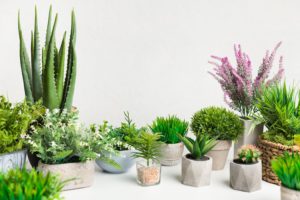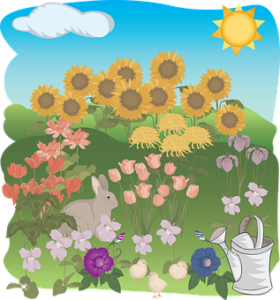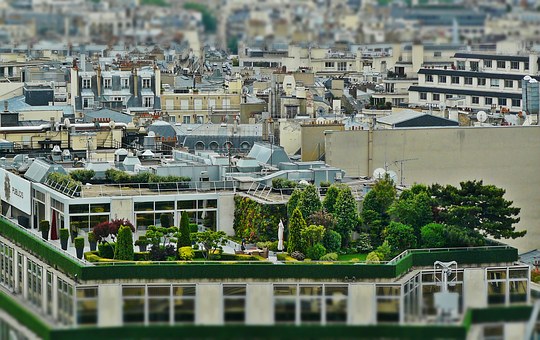The main advantage of container gardening is that it is flexible. You can choose anywhere you want to grow without being tied down to a fix garden bed, or poor soil growing conditions.
If your garden bed is not ideally situated, or maybe not getting enough sunlight or your garden, rooftop or balcony is not suitable to support a soil based fixed garden, then containers provide a means to plant almost anything you want in the desired position.

The attractiveness with containers is that they can be moved with ease to maximize the position so that the plants can obtain the best sunlight
DYNAMIC BRANCH OF HORTICULTURE
Container gardening is a dynamic branch of horticulture, as numerous varieties of plants are being developed and marketed specifically for their suitability to be grown in pots and planters every year.

‘Patio living’ is the phrase used to describe gardening in concreted modern housing, where vacant paving, especially mainly in summer, have containers. These containers and hanging baskets of all different sizes and shapes, contains annual flowers, perennial shrubs and flowers, vegetables, fruit or exotic foliage.
So that a vacant garden will turn from a dreary space to your own piece of paradise, full of large pots and planters on the ground or affixed upon a wall. This will brighten a dull space and maybe if you have the time and expense, a small water feature can be added. You can let your own imagination run wild.
With the right selection of hardy, long-lived plants then you can design your garden in containers that will require little attention from one year to another. This will make gardening easier for those with busy lives. Container gardening is for all types of gardeners from novices, to intermediates and experts.
This website is tailored to your own needs and I hope you will enjoy it and make the best use of it. Even if you don’t have a garden but only a balcony or rooftop then a container garden is a requirement to brighten any space.
WHERE TO POSITION YOUR CONTAINERS
Every garden presents a challenge where adverse weather conditions and growing environments must be met in order to have a successful container garden and avoid failure. There is nothing worse than planting a costly plant in the wrong place in the wrong container for it to die in the same growing season.
For a successful container garden choosing the right plant for the right container in the right place is very important. This will involve mixing only plants that will thrive in similar growing conditions, which is so important to your growing success.
For example, growing tender plants need protection and will benefit from a shelter of a warm wall. This wall could be a side of the house or a wall in the garden itself. This is why window boxes are good for growing tender plants, which will make your house look more attractive.
WHY WIND DIRECTION AND PROTECTION IS IMPORTANT
The wind is also another factor that must be taken into consideration when container gardening. Light pots can be blown down in windy areas of the garden, so must be securely positioned. Hanging baskets are especially prone to wind turbulence where delicate shoots can be damaged.

Look out for cold Easterly winds in winter, which can kill tender and unprotected plants, so try to shelter plants from this.
THE IMPORTANCE OF THE SUNLIGHT AND ITS POSITION
The sun is such an important aspect in container gardening and in fact in any gardening. The position of the sun throughout the seasons must be gauged in order to avoid severely shaded areas.
You must position sun-loving plants in containers so that they receive at least six hours of sun per day. For example, strawberry plants in planters will have a large yield of strawberries if positioned in maximum sunlight. They will also ripen must more quickly.
Partial shaded plants can be grown where the plant gets some sunlight for part of the day, whilst shade tolerant plants can be grown where the plants get limited or no sun at all, such as a North facing wall.

Another consideration of container gardening is that temperature tends to be higher than in a normal garden, especially as the walls and paving slabs can reflect heat back into containers. If you are using pots that are black or very dark where radiation from the sun can heat the compost in the container very rapidly.

This is good for seed germination but could make it very difficult in a heatwave. This is because the soil will overheat, causing the plants to wilt and even die. This makes watering problematic in summer where the container may need to be watered daily or even twice a day!
ALL YOU NEED TO KNOW ABOUT POSITIONING YOUR CONTAINERS
Position the pots and planters so that maximized sunlight is achieved if at all possible. If on the other hand, the plants you choose prefers the shade then keep them away from bright sunlight. You also need to minimize wind disturbance so that containers are not damaged when a gale is blowing, and also positioned in a sheltered spot as protection from frost pockets.
If you have any points that you wish to discuss, please leave a comment below and I will get back to you.


Very informative post! Especially since I’ve started collecting more plants here lately even though I’m looking for a new home (which is why I’m keeping them in containers for the moment).I never even considered the color of the planting containers effecting how my plants will grow..or not grow.
I love plants and really just having them all around but I’ve always had more of a “brown” thumb than a green. But I want to do better!
Since you’re familiar with gardening and plants I have a question for you. My lavender plant was overwatered by a family member and I read that it usually thrives in sandy soil and very little water so to let it dry out a bit in sunlight. It’s been over a week and it looks as sad as its ever looked! Any ideas on how I can save her? She smells quite lovely and was quite expensive!
Thank you Jennifer. The colour scheme not only applies to the planter themselves but the plants that are in them so that they can blend in or contrast each other. This is important if you want a striking container garden display.
I have just written an article soon to be published about watering and how under or over watering can be detrimental to plants. To save the plant, it is a wait and see approach, as spring is fastly approaching look for signs of new shoots. Don’t water until the soil has dried out (feels dry to the touch) and finger’s cross it may recover. If it still looks wilted after trying all these steps then I am afraid that the plant is beyond redemption. You may need to buy a replacement.
Antonio
Thanks Antonio:) I’ll have to let time tell then! I’ve been babying her so…
Hi Jennifer
Just keep me posted.
Antonio